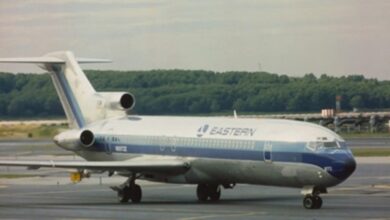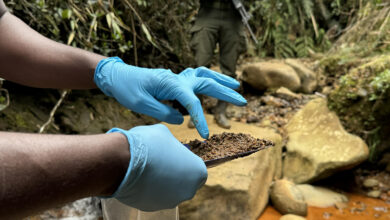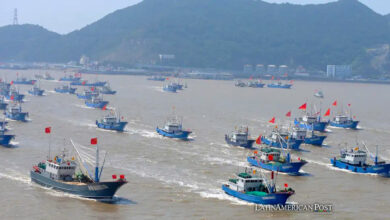Latin America Embraces Path to Net-Zero Aviation

As global aviation emissions continue to rise, countries across Latin America are working to align with ambitious net-zero targets by 2050. Building on research into sustainable aviation fuel, policymakers and industry leaders are comprehensively exploring strategies for decarbonizing air travel.
The Urgency of Aviation Decarbonization
Aviation now makes up about 2 percent of the world’s carbon dioxide. Experts expect this number to rise a lot in the next few decades. More people ask for flights within their own countries and abroad. With incomes growing and countries working together more closely, Latin American nations must find ways to lower the carbon output from flying. According to various climate reports and industry projections, the region’s air travel demand could more than triple by 2050—an increase that may see related emissions at least double compared to present levels.
Such growth poses a dilemma for countries balancing economic development with international climate commitments. World leaders joined the Paris Agreement’s goal to keep the heat rise under 1.5 degrees Celsius, and the International Air Transport Association vows to end carbon emissions in air travel by 2050. This tight schedule forces airlines to change how they buy fuel, burn it, and build planes next to run their work. Latin America finds itself at a critical crossroads, grappling with whether current technologies and emerging innovations can deliver on these targets cost-effectively and socially equitably.
In particular, reaching net zero within a quarter century will require concerted efforts not only from aircraft manufacturers and airline operators but also from policymakers, investors, and scientists. The sector’s unique challenges—dependence on high-density fuels, lengthy aircraft life cycles, and strict safety regulations—make immediate large-scale change difficult. The period for important action is growing shorter, which calls for quick measures. Each year that passes will force us to accept higher emissions and make the tasks of deep carbon reduction more costly and difficult.
In this case, scientists from several labs and groups searched for effective paths to cut carbon in Latin America’s aviation. They drew up plans that explain how various devices, rules, and market factors can combine to lower carbon emissions over time. Based on one such comprehensive assessment, decision-makers are especially interested in harnessing the potential of sustainable aviation fuel (SAF) and market-based strategies to bridge the gap between current practices and the net-zero horizon.
The Role of Sustainable Aviation Fuel
Sustainable aviation fuel (SAF) has emerged as one of the most viable short-to-medium-term solutions for reducing aviation’s carbon footprint. Produced from various low- or zero-carbon feedstocks—such as non-food crops, municipal waste, and byproducts like cooking oil or agricultural residues—SAF can be used in today’s aircraft with minimal engine modifications or airport refueling infrastructure. This compatibility is a significant advantage; unlike hydrogen or battery-electric propulsion, SAF does not require an entirely new generation of planes or the immediate rebuilding of entire airport systems.
In analyses specific to Latin America, researchers have focused on feedstocks such as sugarcane-based ethanol, corn-based ethanol, and palm oil- or soybean-based hydro-processed esters and fatty acids (HEFA). These methods use current farming systems and structures and offer a possibly expandable way to create fuel that releases only 20 percent of the carbon compared to jet fuel made from petroleum. Yet, raising SAF production meets some challenges. Critics worry about competition for land between energy crops and food, the potential for biodiversity loss if feedstock expansion is not managed sustainably, and the creation of new pressures on water resources.
Cost remains a pivotal concern. As of 2024, Latin America’s jet fuel prices hover near $0.70 per liter, while SAF production costs in the region can range from around $1.11 to $2.86 per liter. Such discrepancies threaten to push operating expenses higher for airlines, which could, in turn, reduce overall passenger demand if ticket prices rise substantially. To estimate such outcomes, one must rely on how government rules, carbon cost plans, and monetary help for SAF price appeal combine. Should these plans succeed, they may boost funds for SAF making and lower costs over time.
At a global level, climate scenarios suggest that SAF alone may not be sufficient to eliminate emissions from the aviation sector—especially as demand for air travel continues its steady climb. Yet, robust adoption of SAF could lead to a steep drop in net emissions. Under a scenario that aims to limit global warming to 1.5 degrees Celsius, researchers have projected that if SAF utilization in Latin America is raised to around 65 percent by 2050, emissions might be cut by roughly 60 percent (compared to a future path with weaker climate policies). The remaining emissions gap could be closed by operational improvements, alternative propulsion (like hybrid-electric planes), and offset mechanisms such as carbon removals or reforestation initiatives.
However, large-scale SAF rollout demands significant capital investment in production facilities. According to some estimates, the cumulative capital expenditure required to build new SAF plants in Brazil, Chile, Colombia, Ecuador, Mexico, and Peru between 2025 and 2050 could total more than $200 billion. Such sums are daunting but also point to a significant economic opportunity if the right conditions—like stable feedstock supply, reliable infrastructure, and supportive regulations—are in place.
Economic Challenges and Policy Mechanisms
Decarbonizing aviation depends not only on new technology but also on creating economic and policy tools that help new ideas spread widely. The fact that SAF may cost more than regular jet fuel shows that we must have clear steps to close the price gap. These steps might offer financial help to SAF makers, charge extra for fossil jet fuel, or create a more extensive system where airlines pay for the carbon they release. In some cases, governments may also require a minimum mix of SAF, which would secure a market.
Policymakers in Latin America can consider the track record of similar initiatives worldwide. In North America and Europe, policy frameworks that include tax incentives, low-carbon fuel standards, or blending mandates have stimulated SAF production, albeit at still-limited levels. If these policies work well in Latin America, they may lead international investors to put money into new SAF projects, lifting rural economies where feedstock is grown and creating jobs. If policies are not steady and long-term, the private sector might not want to build costly biofuel factories that could take years to earn profits.
As more people fly, leaders must find a middle ground between keeping flights cheap and reducing carbon emissions. If policies drive up the price of aviation fuel with no mitigating support, airlines and passengers might bear higher costs, potentially discouraging travel and slowing economic growth reliant on tourism and business flights. Some analysts suggest that introducing gradual policy changes and targeted assistance for airlines serving remote or disadvantaged communities can smooth this transition. There is also an argument in favor of funneling revenue from carbon pricing back into climate initiatives, such as forest conservation or advanced research on other low-carbon propulsion systems.
Exploring ways to improve how we operate and build airplanes is essential. Using one engine to move on runways or setting up air traffic rules so airplanes do not spin around helps lower fuel use. Next-generation airplanes might incorporate aerodynamic improvements, lightweight materials, and hybrid-electric systems. Yet these solutions remain in different stages of development, and their widespread adoption will be gradual. SAF, by contrast, offers an immediate though partial fix, positioning it as a foundational pillar of any near-term decarbonization strategy.
A Unified Vision for a Net-Zero Future
Latin America can serve as a center for SAF production because the area holds many natural resources and a strong farming base. To make that goal real, countries must plan carefully together. A region-wide approach would help countries share best practices, avoid duplicative investment, and create unified markets that can attract larger-scale financing. Experts also stress the importance of standardizing regulations so airlines can rely on consistent policies when planning their fleets and routes.
Beyond SAF, a multi-pronged approach is needed to meet net-zero targets by 2050. Upgrading aircraft fleets, improving operations, and using carbon offsets or capturing carbon from the air to reduce leftover emissions can all add up to one complete answer. By using clearer simulation models and steady ways to follow data, those who make choices can change their plans. This helps ensure that money decisions match new tools and real market conditions.
In the end, keeping trust in the public matters a lot. People might enjoy cleaner air plus fewer climate problems. Still, they might also pay more for travel or have fewer flight options, especially in rural or isolated areas that depend on air travel. Transparent dialogues about these trade-offs and demonstration projects showing real-world benefits could bolster acceptance and engagement.
Governments, moreover, airlines may have to start campaigns to show that cutting air travel carbon is necessary and possible. If done right, cutting carbon can bring money and social benefits. Large SAF production can push changes in farming, build new jobs, and bring life back to nearby areas. At the same time, a clean, efficient flight system can connect Latin America more to world markets, helping tourism and trade next to outside investment grow. In this way, the goal of zero net carbon flights is not just about protecting nature; it also leads to a way of growing that can change the region’s role in the world.
The next few years will likely see intensified efforts to refine SAF production methods, address the cost gap, and consolidate regional collaborations. Much remains uncertain—especially regarding the pace of technology improvements and the shifting political landscape—but the trajectory is clear. Because the planet warms and calls for sustainable actions, Latin America’s aviation industry can set an example. It shows how research policy and new ideas can change air travel to make it cleaner and more accountable.
Also Read: Chile Mining Industry Prepares For Looming Earthquake Threat
Using available sources, applying clear policy rules, and spending on research, Latin America may quickly grow SAF output and use extra steps to lower emissions in the air. This work brings results: communities that stay safe and strong, an aviation industry that competes globally, and a valuable boost to the world’s climate aims. Ultimately, reaching no net emissions in aviation does not only mean meeting a far-off goal; it means building a future where a healthy economy and care for nature work side by side.





